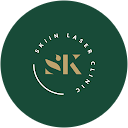
In the ever-evolving landscape of dermatology, advancements in technology continually reshape the possibilities for patient care and aesthetic enhancement. Among these innovations, ablative lasers stand out as transformative potential, offering precise solutions for a range of dermatological conditions.
From laser surgery to skin resurfacing, the applications of ablative lasers are extensive, promising both therapeutic effectiveness and aesthetic improvement. In this comprehensive guide, we look into the intricacies of ablative lasers, exploring their mechanisms, applications, procedures, benefits, and risks.
Understanding Ablative Lasers
Ablative lasers are cutting-edge devices that emit high-energy light pulses that vaporise targeted tissue, precisely removing layers of skin to address various dermatological concerns. They operate on the principle of controlled thermal injury, ablating tissue while stimulating collagen production, resulting in skin rejuvenation and renewal.
There is a diverse array of ablative lasers, each tailored to specific clinical needs and desired outcomes. Carbon dioxide (CO2) lasers and erbium-doped yttrium aluminium garnet (Er:YAG) lasers stand as prominent examples, distinguished by their wavelength characteristics and tissue interactions.
While CO2 lasers excel in treating deeper skin imperfections and scars, Er:YAG lasers offer superior precision with minimal thermal damage, making them ideal for delicate areas and superficial resurfacing.
In contrast to non-ablative lasers, which primarily target dermal collagen without ablating the epidermis, ablative lasers penetrate deeply into the skin, precisely removing damaged tissue and promoting comprehensive skin renewal.
This fundamental distinction underscores the unparalleled efficacy of ablative lasers in achieving considerable improvements in skin texture, tone, and overall appearance.
Applications of Ablative Lasers
Laser Surgery
Ablative lasers redefine precision in surgical interventions, particularly in the realm of dermatology. Leveraging the principle of laser ablation, these devices offer unparalleled accuracy in excising benign and malignant lesions, minimising collateral damage and optimising tissue preservation.
From precise tumour removal to intricate lesion excision, surgical procedures can be performed with utmost precision and efficacy with an ablative laser, revolutionising the standard of care in dermatologic surgery.
Skin Resurfacing
Ablative lasers deliver transformative results in addressing signs of ageing, scars, and dyspigmentation. Through controlled laser ablation, these devices precisely remove damaged skin layers, stimulating collagen production and promoting skin rejuvenation. Whether targeting wrinkles, sun damage, or acne scars, ablative lasers offer patients a pathway to smoother, more youthful skin, restoring confidence and vitality to their appearance. To find out more about laser skin resurfacing, read our article on Laser Skin Resurfacing with the Cool Laser.
Other Dermatological Applications
Beyond laser surgery and skin resurfacing, ablative lasers are also used in addressing a spectrum of dermatological conditions. From actinic keratosis to seborrheic keratosis and epidermal nevi, these devices offer safe and effective treatment alternatives.
Laser ablation allows targeted tissue removal, resulting in optimal outcomes while minimising risks and downtime. The versatility of ablative lasers empowers clinicians to address diverse patient needs with precision and confidence.
Procedure and Techniques
Prior to performing ablative laser procedures, meticulous pre-operative preparation is essential to ensure optimal outcomes and patient safety. A comprehensive evaluation of the patient’s skin type, medical history, and treatment goals as well as the selection of appropriate laser parameters result in the treatment being tailored to individual needs.
Various techniques are employed in ablative laser surgery and skin resurfacing, each offering unique advantages in addressing specific concerns. Fractional ablative lasers, such as fractional CO2 and fractional Er:YAG lasers, deliver precise microthermal zones of injury, leaving the surrounding tissue intact to promote rapid healing and minimise downtime.
Full-field ablative lasers, on the other hand, ablate the entire surface area of the skin, yielding more dramatic results but necessitating longer recovery periods.
Anaesthesia options and pain management strategies play a crucial role in optimising patient comfort during ablative laser procedures. Topical anaesthesia, local anaesthesia, or nerve blocks may be employed depending on the extent and depth of treatment, ensuring a pain-free experience for patients undergoing laser surgery and skin resurfacing.
Post-Procedure Care and Recovery
Following ablative laser procedures, thorough post-operative care is important to ensure optimal healing and maximise treatment outcomes. Immediate post-procedure care involves the application of soothing topical agents, such as emollients and occlusive dressings, to promote epithelialisation and reduce discomfort.
Patients can expect a gradual recovery process characterised by erythema and crusting, with downtime varying depending on the extent of treatment and individual skin response. Adherence to prescribed post-procedure protocols, including sun protection measures and avoidance of irritants, is essential to minimise the risk of complications and expedite healing.
Long-term skincare regimens incorporating gentle cleansers, moisturisers, and broad-spectrum sunscreens are integral to maintaining the results of ablative laser treatments and optimising skin health. Regular follow-up visits allow clinicians to monitor progress, address any concerns, and tailor ongoing skincare regimens to individual patient needs.
Benefits and Risks
Precision Targeting
Ablative lasers are able to deliver energy precisely to the targeted areas of the skin, allowing for accurate treatment of various skin concerns.
Collagen Stimulation
Laser ablation also promotes the production of collagen, a protein essential for skin firmness and elasticity. Increased collagen production leads to smoother, firmer, and more youthful-looking skin over time.
Customisable Treatment
Ablative laser procedures can be tailored to each patient’s unique needs and desired outcomes, allowing for customised treatment plans to address individual skin concerns effectively.
Versatility
A wide range of dermatological conditions, including acne scars, fine lines and wrinkles, sun damage, age spots, and uneven skin texture, can be addressed with laser ablation, making them a versatile option for skin rejuvenation and improvement.
Long-lasting Results
While multiple treatment sessions may be required for optimal results, ablative laser treatments can provide long-lasting improvements in skin tone, texture, and overall appearance compared to non-surgical alternatives.
However, it’s important to acknowledge and mitigate the potential risks and side effects associated with ablative laser procedures. These may include redness and swelling, crusting, and pigmentary changes, which typically resolve with time and proper post-procedure care. Rare complications such as infection and scarring need proactive management to ensure optimal patient outcomes.
The Dermablate® Cool Laser
Introducing our Cool Laser, the highest-performing Er:YAG laser technology, setting the standard for precision skin ablation and fractional therapy. With unparalleled micrometre accuracy and uncompromised quality, the Cool Laser offers a diverse range of treatments tailored to meet the dynamic needs of modern dermatology.
Featuring six distinct handpieces, the laser empowers clinicians with a comprehensive treatment arsenal, spanning skin rejuvenation, skin ablation, snoring treatment, and beyond. Discover the limitless possibilities of our Cool Laser by visiting our device page or reading our article about The Dermablate® Cool Laser.
Conclusion
Ablative lasers represent a paradigm shift in dermatological care, offering clinicians unparalleled precision, efficacy, and versatility in addressing a range of skin concerns. From laser surgery to skin resurfacing, the applications of ablative lasers are vast and transformative.
By understanding the mechanisms, procedures, benefits, and risks of ablative lasers, clinicians can utilise their full potential to deliver optimal outcomes with confidence and precision.
Frequently Asked Questions
What are ablative lasers and how do they work?
Ablative lasers are advanced medical devices that emit high-energy light pulses to vaporise targeted tissue, effectively removing layers of skin to treat various dermatological issues. They work by causing controlled thermal injury to the skin, which ablates (or removes) damaged tissue while stimulating collagen production, leading to skin rejuvenation and renewal.
How long is the recovery time after an ablative laser procedure?
The recovery time for ablative laser treatment can vary depending on the depth and extent of the procedure. Typically, following skin ablation treatment, the wound will require a few days to heal, during which healthy skin tissue replaces the treated area. However, following the recommended post-procedure guidelines is crucial to reduce the chances of experiencing complications.
What skin conditions can ablative lasers treat?
Ablative lasers are versatile tools used for a wide range of dermatological conditions, including but not limited to:
- Signs of aging (wrinkles, fine lines)
- Sun damage
- Acne scars
- Dyspigmentation
- Benign and malignant lesions
- Actinic keratosis
- Seborrheic keratosis
- Epidermal nevi
What are the benefits of ablative laser treatments?
Benefits include precision targeting of skin concerns, stimulation of collagen production for firmer and smoother skin, customisable treatment plans tailored to individual needs, versatility in treating various skin conditions, and long-lasting improvements in skin tone, texture, and appearance.












